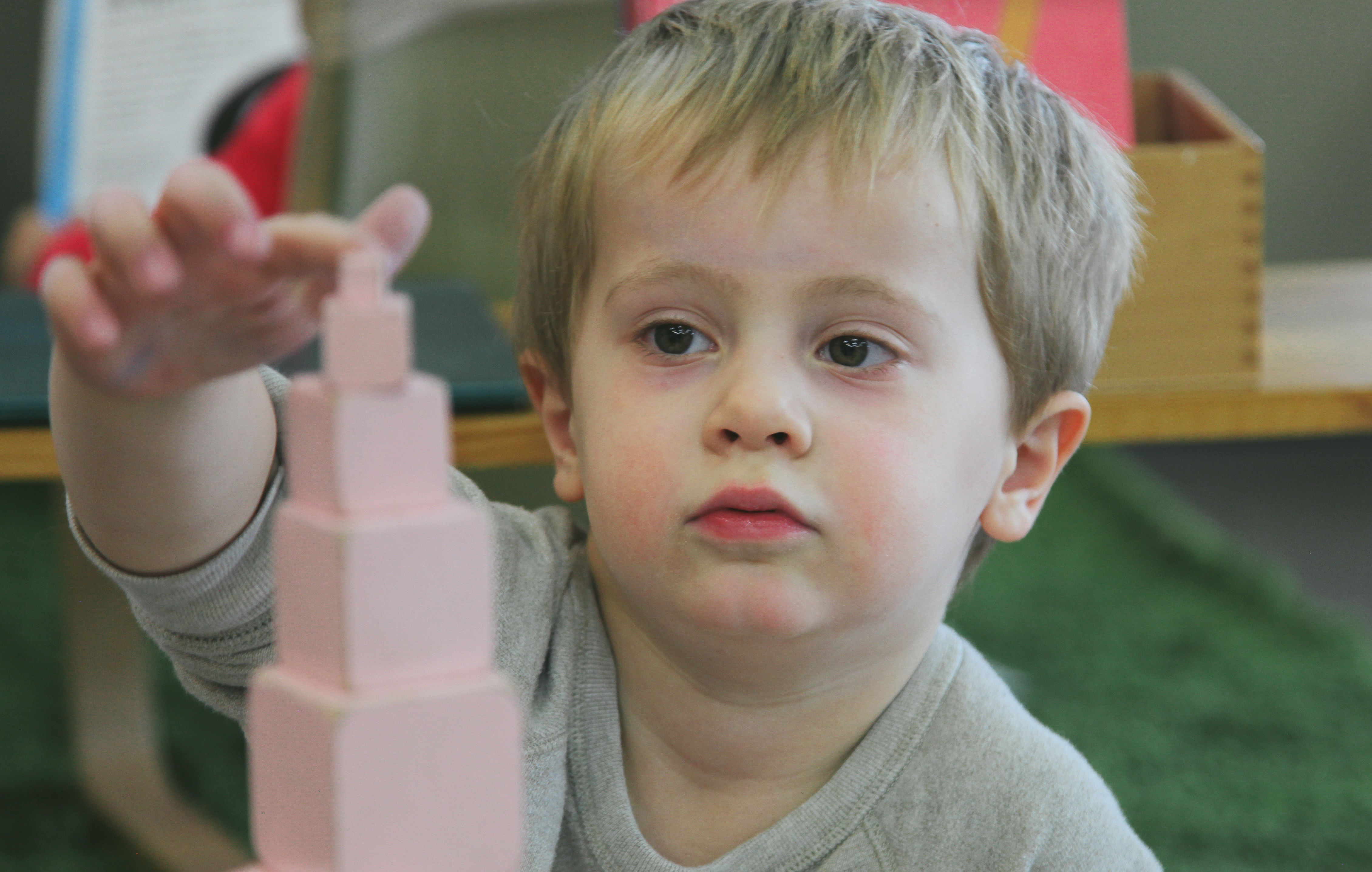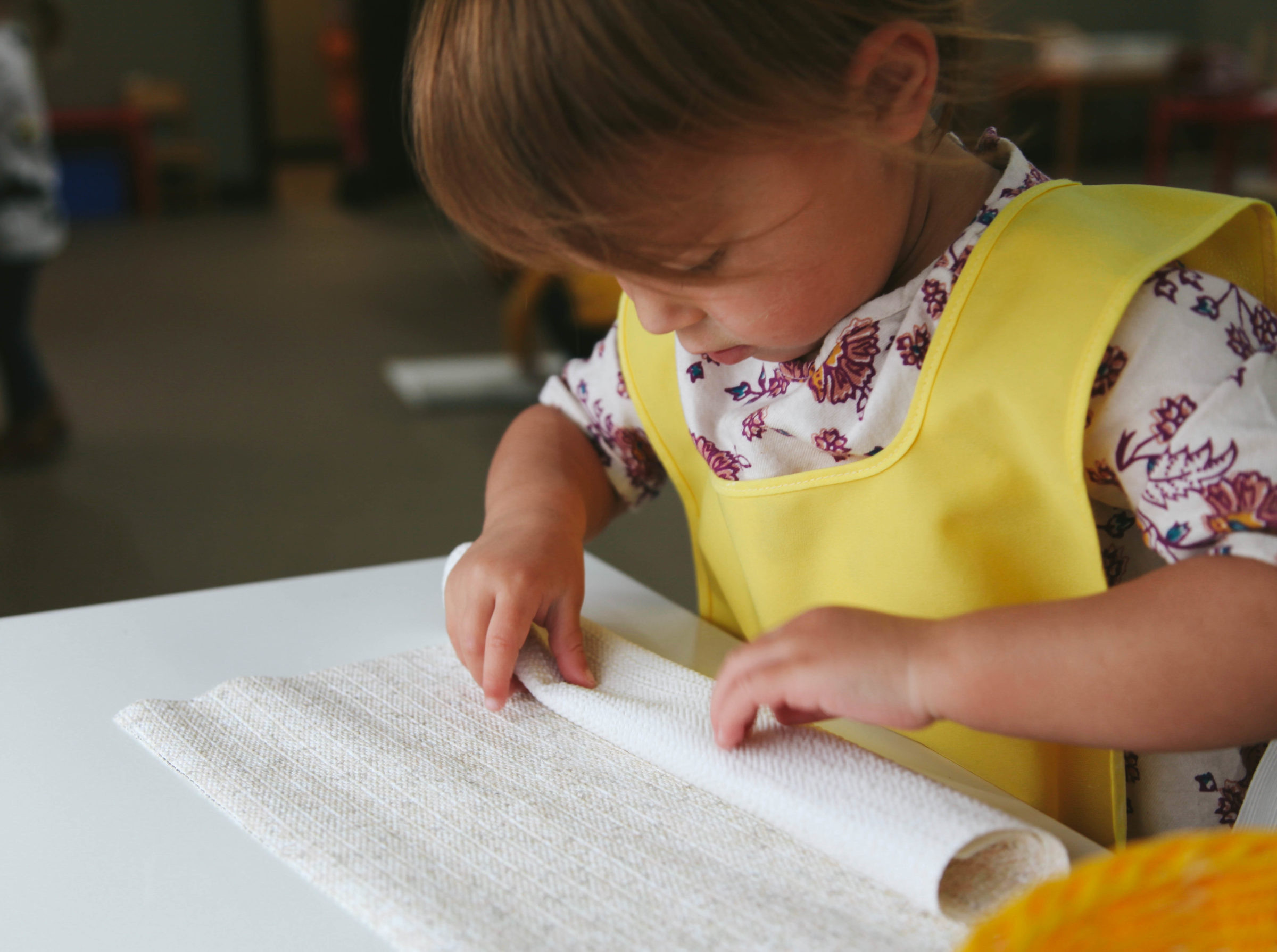There’s Always More to Learn in Montessori
Thoughts & Reflections
The work is never finished. Not like laundry, where it feels like the mountain is worn down only to be built back up again, but like a grand and detailed work of art, where closer inspection gives more nuance, distance brings perspective. There’s always more to see, always more to do, always more to learn.
The materials are not used once, for a single purpose. The materials are used again and again, for countless purposes.
Let’s examine one path: The Iconic Pink Tower.
It stands in the classroom, beautiful, carefully stacked, a visual reminder of calm and order. It’s sensible. It just looks right.
A very new child is drawn to this material. She might dust each of the cubes, and then carefully put them back, probably incorrectly. Someone else will straighten them, because disorder is just too chaotic.
A child will learn to build the Pink Tower. There will be lots of practice, he’ll build it incorrectly but then return it to the shelf in order. At some point, he’ll get it right. I did it! How did that happen?
The experimentation begins. Can I build it upside-down? Can I build it horizontally? What happens when I combine it with other materials, like the Brown Stair?

Language is introduced. Large, small, larger, smaller, largest, smallest. Can you bring me the smallest cube of the Pink Tower? Can you bring me one that is slightly larger than this one?
We’ll play games. We’ll distribute the ten cubes around the room and seek them out. We’ll have the cubes at one rug and build the Pink Tower at another, holding the image of which cube we need next in our minds as we walk across the room. We’ll build the Pink Tower with a blindfold, using our hands to tell us which one comes next, rather than our eyes.
We’ll start to write. We’ll write with the Moveable Alphabet, “pinc twr.” We’ll write with a pencil, a small label with wobbly letters.
Reading begins. We’ll read a label, this time it reads, “pink tower,” and we’re comfortable with those nuances of English through all our practice and hard work.
We’ll start grammar. We’ll read “pink tower” and ask, “what kind of tower?” and label the adjective and the noun. We’ll read “build the Pink Tower,” and find the action word, the verb. We’ll read “a pink cube and a blue cone on a white rug,” and identify the conjunction and the preposition.
We’ll work on sentence analysis. We’ll read, “The girl carefully built the tower while the boy observed with his hands behind his back.” First, we’ll act it out (because although we don’t have fantasy, there is definitely dramatic play, and we all love a bit of charades), then we’ll diagram the sentence. What did the girl do? Are there any adverbial phrases?
“The materials are used again and again, for countless purposes.”
Even later, in Elementary, we’ll use a material that looks very similar to explore volume. Math will not be obtuse and inaccessible, it is tangible, just as it was when we were so small, dusting each side of that beautiful, irresistible block. No, not a block. The largest cube of the Pink Tower.
The material is never done giving up its secrets. They unfold as the child’s knowledge and mastery align. There’s always more to learn.
This is part of the reason a child can’t always say what they did during the day, or why we can’t always give a comprehensive report of a child’s work. Are you “still” doing the Pink Tower? You’ve already mastered that, what could you possibly learn?
To which the only appropriate answers are, “yes,” and “everything.”
Written by:
Charlotte Snyder



